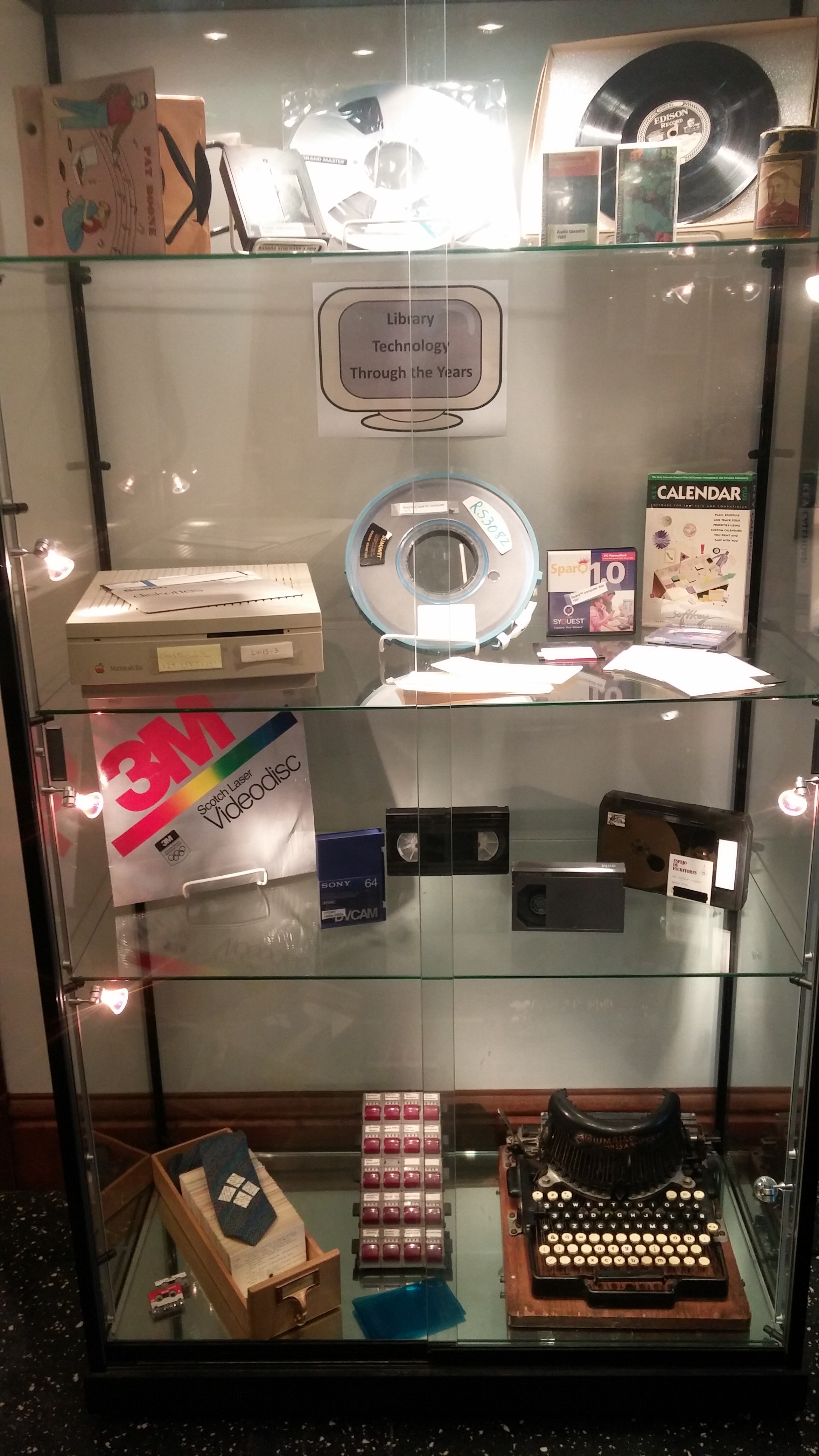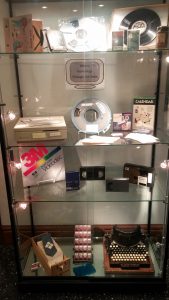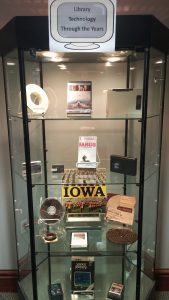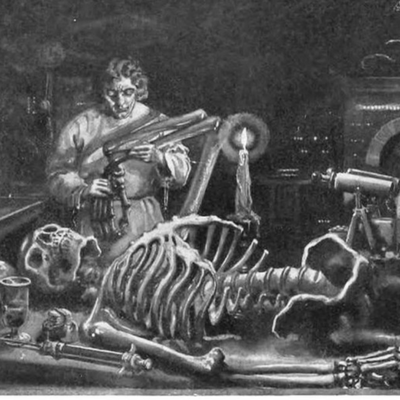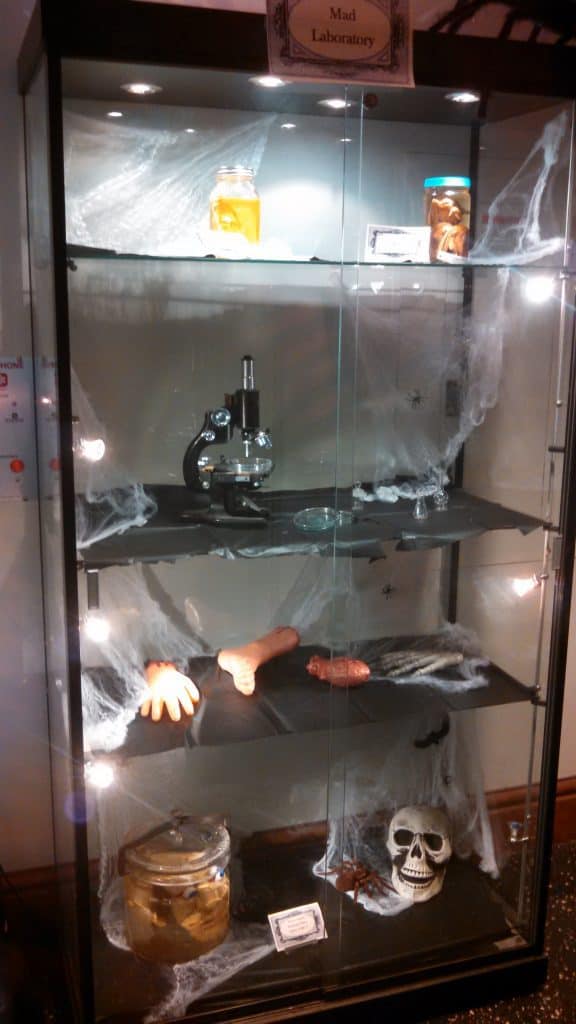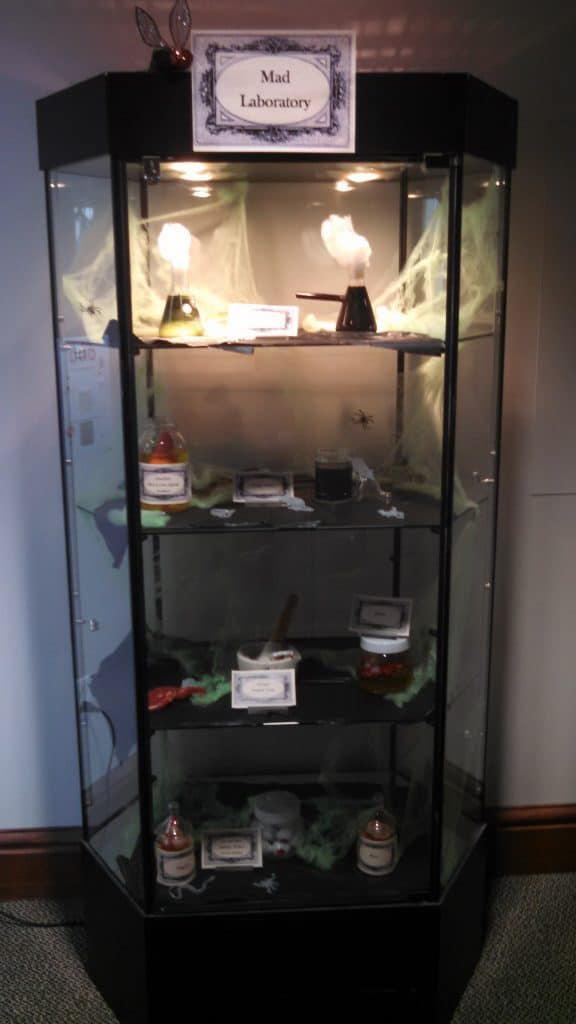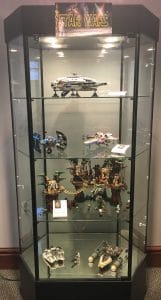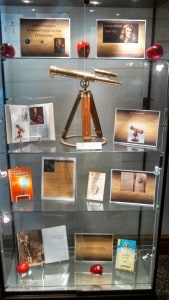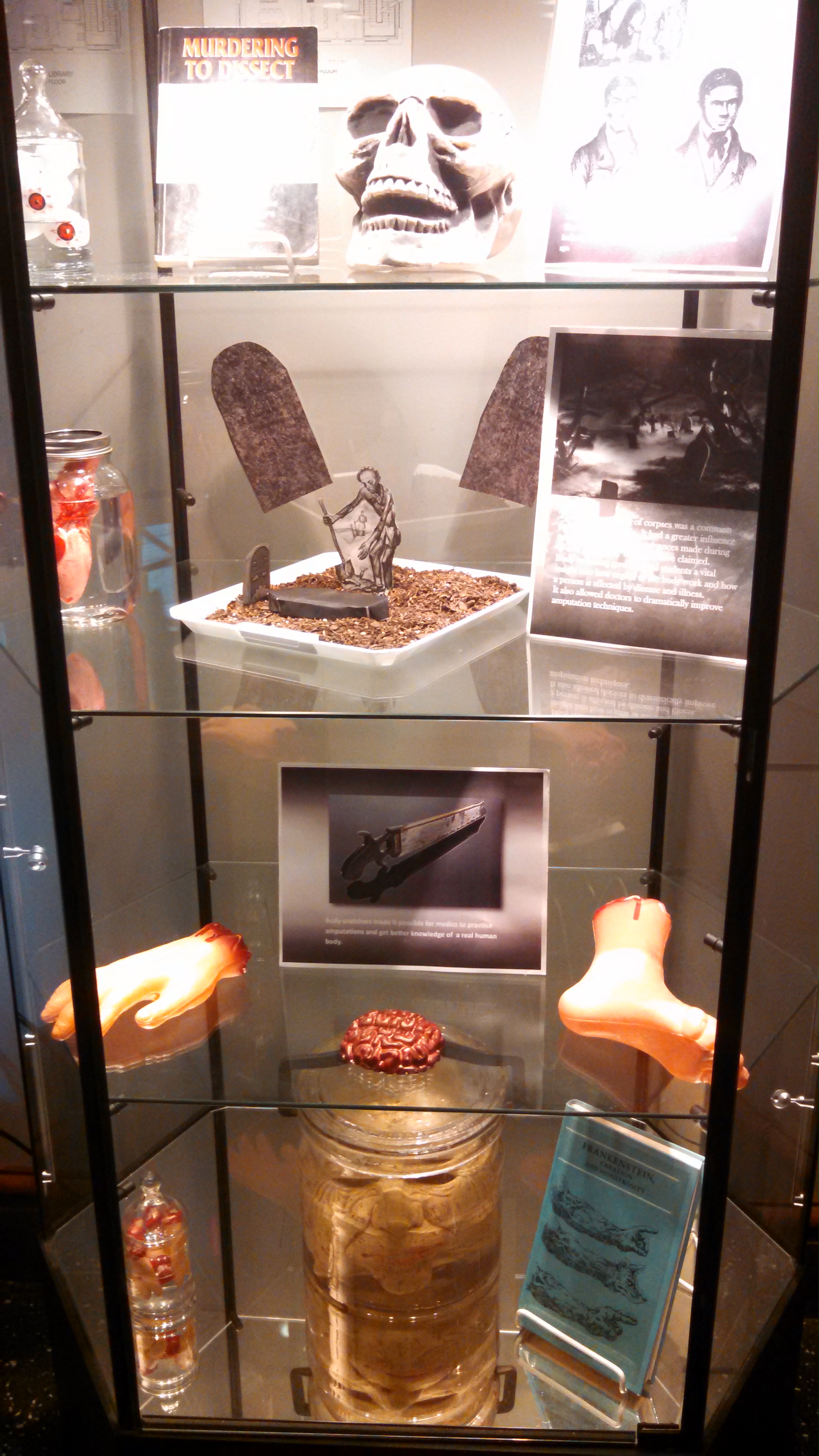We’ve installed a new exhibit at the Sciences Library, just in time for Halloween!
The Science of Frankenstein explores the scientific practices that inspired Mary Shelley’s famous novel, Frankenstein.
 Victor Frankenstein collected body parts for his monster through body snatching, a common, though gruesome, practice of the time. Historically, a shortage of cadavers available for medical students created an industry of enterprising thieves who would prowl graveyards for recently buried corpses to sell for medical research. The corpses allowed medical students to learn more about the internal organs of the body and how they work as well as giving doctors the opportunity to improve amputation techniques.
Victor Frankenstein collected body parts for his monster through body snatching, a common, though gruesome, practice of the time. Historically, a shortage of cadavers available for medical students created an industry of enterprising thieves who would prowl graveyards for recently buried corpses to sell for medical research. The corpses allowed medical students to learn more about the internal organs of the body and how they work as well as giving doctors the opportunity to improve amputation techniques.
Dr. Frankenstein used electricity to reanimate an assembly of body parts to create his monster. This was based on the 18th century work with electricity by surgeon Luigi Galvani, physicist Alessandro Volta, and Galvani’s nephew, Giovanni Aldini.
monster. This was based on the 18th century work with electricity by surgeon Luigi Galvani, physicist Alessandro Volta, and Galvani’s nephew, Giovanni Aldini.
While dissecting a frog near a dissection machine, Galvani’s assistant touched a scalpel to a nerve in the frog’s leg, and the leg jumped! Galvani believed this was evidence of “animal electricity” which came from the frog itself.
Volta replicated Galvani’s experiments, but arrived at different conclusions. He believed the jumping leg was caused by a bimetallic arc, rather than animal electricity.
Aldini built on the work of his uncle and Volta and toured the capitals of Europe to demonstrate the medical benefits of electricity by electrifying the corpses of executed criminals, making them twitch and in some cases, sit up.
It would not be hard for a creative woman, like Mary Shelley, to extend this research and imagine a day when science might succeed in reanimating the dead. To learn more, come check out the exhibit now on display at the Sciences Library!
